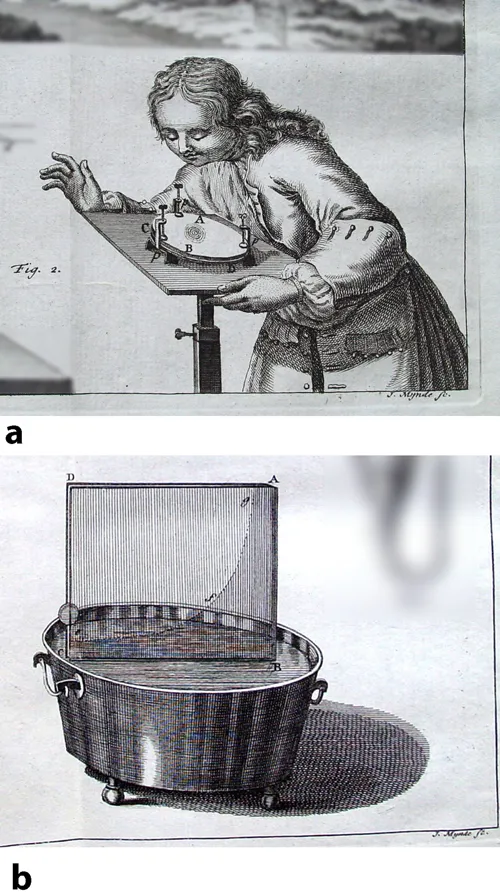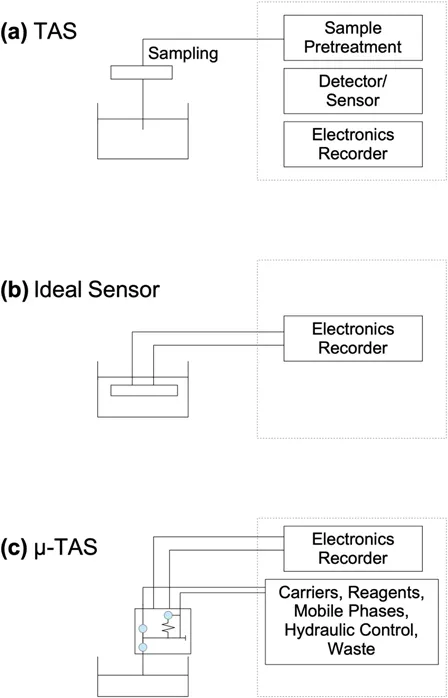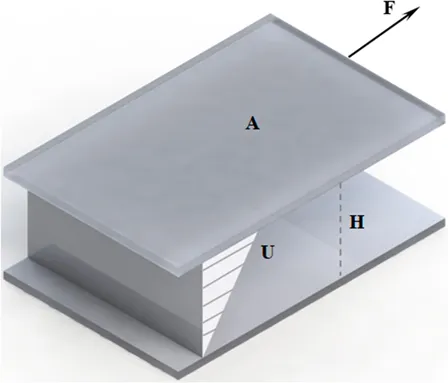![]()
1 Theory of Microfluidics
The theory of microfluidics is a fundamental tool for understanding microfluidic chips and their applications. In this chapter, the phenomena of fluid dynamics are introduced and scaled down to understand how fluid behaviour changes when flowing in microchannels. The introduction of dimensionless numbers, such as Reynolds, Péclet and capillary numbers, is used to determine the prevalent forces in fluid momentum and mass transfer and to evaluate the predominance of surface and volume forces.
1.1 Introduction
Early scientists may have known more about microfluidics and nanotechnology than we are aware of. An example by Isaac Newton shows the observation of an optical interference pattern (‘Newton's rings’) on a glass device (Figure 1.1a) and a very nice experimental demonstration of capillary action (Figure 1.1b). 1
Figure 1.1 Textbook illustrations from 1747 showing (a) the observation of optical interference between two glass plates and (b) capillarity as a function of the gap distance between two glass plates.
Much later, in 1967, G. K. Batchelor coined the term ‘microhydrodynamics’ to describe the flow regime. 2 Today, the term microhydrodynamics has been replaced by the term ‘microfluidics’, which embodies an independent discipline of fluid dynamics referring to all phenomena observable in a scale range between 1 µm and a few hundred µm. The most important new topic introduced by the small scale of microfluidic devices is the significant role of surface forces (surface tension, electrical effects, van der Waals interactions and surface roughness), in addition to complicated three-dimensional geometries. Chip fabrication and clean-room use were derived from microelectronic chip manufacturing. The desire to explore very small spaces for engineering is often deduced from a famous talk ‘There's plenty of room at the bottom’ by Richard Feynman, 3 and the experimental take-off was triggered by needs in environmental monitoring, in drug discovery, in clinical diagnostics and by the human genome project. The concept of bringing a microfluidic circuit very close to the point of measurement was dubbed ‘micro total analysis system’ or µTAS, see Figure 1.2. 4
Figure 1.2 Schematic of different approaches to monitoring a chemical compound in solution. (a) A total analysis system (TAS) with a sampling device; (b) an ideal sensor; (c) the concept for a micro total analysis system (µ-TAS), where the sample is handled very close to the point of sampling. Reproduced from ref. 4 with permission from Elsevier, Copyright 1990.
At the sub-millimetre scale, the dynamics of fluids is characterized by the prevalence of viscous over inertial forces. To understand the reasons for this, we can consider a swimmer and a bacterium, both moving in the water. The swimmer, owing to their large dimensions, shows a significant inertial force while moving in water whereas the bacterium, having smaller dimensions and extremely low momentum, stops within microseconds, when the flagellum motors stop. The very small momentum is such that for the bacterium the water appears as viscous as honey to us.
1.2 Definition of Fluids and Fluid Properties
Unlike molecules in a gas, which have a non-zero free path, the molecules in a liquid are so close to each other that momentum is always exchanged between them. Unlike solid matter, a fluid will always change shape according to the shape of the container. As per definition, liquid is a matter that cannot sustain shear stress in the absence of motion. The fluids can be gases (air), liquids (water, oil, syrup) and more complex systems consisting of several phases (blood, suspensions, emulsions). Such fluids can deform continually under shear stress and consequently, they can flow with no rigid restrictions. In fluids, discrete quantities such as mass and force give way to continuous fields such as specific mass, ρ, dynamic or kinematic viscosity, µ or η, and pressure, p. The specific mass is defined as the mass, m, per unit volume, V. Values of ρ for selected fluids are given in Table 1.1.
Table 1.1 Specific mass values ρ of some common fluids (in g cm−3) as a function of temperature 5
| Fluid | 0 °C | 20 °C |
| Water | 0.999 | 0.998 |
| Air | 0.0013 | 0.0012 |
| Ethanol | 0.81 | 0.79 |
| Glycerol | 1.26 | 1.26 |
The pressure in the liquid is dependent only on the depth and it is not affected by the shape of the vessel containing the liquid. In a system with characteristic dimensions from a few micrometres to a few hundred micrometres, pressure differences can be neglected. It is worth noting that when referring to open microchannels, which have inlets and outlets, any pressure difference induced externally at these openings is transmitted to every point in the liquid, thereby inducing the liquid to flow. The relationship between flow and pressure is mainly defined by the viscosity of the fluids and the geometry of the channel.
A typical example is presented to introduce and define the viscosity. The scheme of the experiment is displayed in Figure 1.3. Two infinite plates are separated by a fluid layer of thickness H. One plate is moved in a straight line relative to the other at a constant speed, U, and the required viscous drag force F amplitude is measured. After an initial transient, F approaches a constant value.
Figure 1.3 Schematic model explaining the viscosity of fluids in a shearing experiment.
The movement of the upper plane first sets the immediately adjacent layer of liquid molecules into motion; this layer transmits the action to the subsequent layers underneath it because of the intermolecular forces between the liquid molecules. In a steady state, the velocities of these laye...



